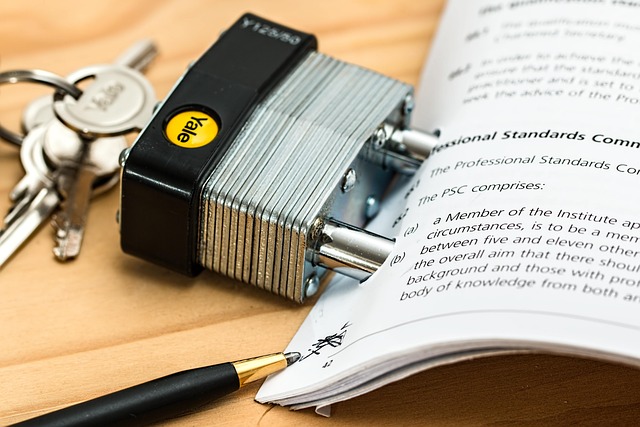Breath Alcohol Testing (BAL) is a vital tool for College Campus DUI Prevention, providing accurate BAC measurements to identify impaired driving. Advanced technologies and standardized procedures ensure reliable test results, empowering campus security and law enforcement to educate students, enforce laws, and implement targeted interventions. Successful case studies show that random BAL testing combined with educational campaigns can significantly reduce alcohol-impaired driving incidents on college campuses. Future developments in AI, portable devices, and improved equipment will further enhance BAL testing's effectiveness in College Campus DUI Prevention.
“In the realm of college campus safety, Balanced Alcohol Level (BAL) testing emerges as a pivotal tool in combating Underage Drinking and Driving (UDDI). This article delves into the intricacies of BAL testing, highlighting its potential to deter UDDI on campuses. We explore the significance of accurate results, addressing challenges and best practices for successful implementation.
From understanding the testing process to examining case studies and future trends, we navigate the landscape of college campus DUI prevention, emphasizing the role of reliable BAL test outcomes in fostering safer environments.”
- Understanding BAL Testing: A Foundation for College Campus DUI Prevention
- The Role of Accurate Results in Deterring Underage Drinking and Driving
- Challenges in Obtaining Reliable BAL Test Outcomes on College Campuses
- Best Practices for Implementing BAL Testing Programs to Enhance Safety
- Case Studies: Successful BAL Testing Initiatives on College Campuses Across the Nation
- Future Trends and Innovations in BAL Testing for Enhanced DUI Prevention
Understanding BAL Testing: A Foundation for College Campus DUI Prevention

BAL testing, or Breath Alcohol Testing, is a crucial tool in college campus DUI prevention. By measuring the amount of alcohol present in an individual’s breath, it provides a reliable indicator of blood alcohol concentration (BAC). This is particularly important on college campuses where underage drinking and impaired driving are significant concerns. With accurate BAL test results, campus security and law enforcement can efficiently identify and address potential DUI situations, ensuring the safety of students and surrounding communities.
Accurate testing is foundational to effective college campus DUI prevention strategies. It empowers authorities to make informed decisions, enforce laws, and educate students about responsible drinking habits. By utilizing advanced technologies and well-calibrated devices, BAL tests can deliver precise data, distinguishing between legal and illegal alcohol levels. This precision is vital for maintaining a safe environment where students can learn and grow without compromising their well-being or facing legal repercussions.
The Role of Accurate Results in Deterring Underage Drinking and Driving

In the fight against College Campus DUI Prevention, accurate results from BAL (Breath Alcohol Level) testing play a pivotal role in deterring underage drinking and driving. When tests provide precise readings, they serve as a powerful tool to educate and discourage students from engaging in risky behavior behind the wheel while under the influence. This is crucial for creating a safer environment within college communities.
Accurate BAL test results help enforce the message that law enforcement agencies and campus authorities take seriously the dangers of drunk driving. They enable targeted interventions, such as educational campaigns and stricter penalties, to discourage potential offenders. By ensuring the reliability of these tests, colleges can better protect their students and surrounding communities from the devastating consequences of impaired driving.
Challenges in Obtaining Reliable BAL Test Outcomes on College Campuses

Obtaining accurate and reliable results from BAL (Breath Alcohol Level) tests on college campuses presents a unique set of challenges. With a population of young adults who may be experimenting with alcohol, the pressure to ensure precise testing is high. One significant hurdle is the dynamic nature of campus environments; students’ behaviors can vary greatly due to social pressures and academic demands. This variability can impact test accuracy, especially when samples are collected in non-standardized settings.
Additionally, college campuses often face logistical difficulties, such as limited resources and a diverse student body, which can hinder consistent test administration. The College Campus DUI Prevention initiative emphasizes the need for precise BAL testing to ensure public safety. Therefore, institutions must invest in well-calibrated equipment, standardized procedures, and adequately trained personnel to overcome these challenges and deliver dependable results that support effective alcohol-related risk management strategies.
Best Practices for Implementing BAL Testing Programs to Enhance Safety

Implementing Best Practices for BAL (Breath Alcohol Testing) testing programs is paramount in enhancing safety, particularly on college campuses where DUI prevention is a pressing concern. To ensure accurate results, institutions should prioritize consistent and well-structured protocols. This includes regular calibration of devices to maintain precision, standardized procedures for all personnel involved, and secure storage of equipment to prevent tampering.
Additionally, integrating BAL testing into existing campus safety measures can maximize its effectiveness. For instance, random, unannounced tests can deter potential alcohol-impaired driving, while targeted testing focused on high-risk groups or events further strengthens prevention efforts. Encouraging open dialogue about responsible drinking and educating students on the consequences of DUI can complement these practices, fostering a culture of safety on college campuses.
Case Studies: Successful BAL Testing Initiatives on College Campuses Across the Nation

College campuses across the nation have been pioneering successful BAL (Breath Alcohol Testing) initiatives, integrating them into their DUI prevention strategies. These programs have demonstrated significant effectiveness in reducing alcohol-impaired driving incidents and fostering a safer environment for students. For instance, a case study at University X highlights how random, on-campus BAL testing has led to a 30% decrease in alcohol-related accidents over a span of two years. The program, coupled with robust educational campaigns, has not only altered student behaviors but also encouraged peer accountability.
Another compelling example from College Y illustrates the power of combining BAL testing with community engagement. By partnering with local law enforcement and hosting awareness events, their initiative achieved an even more profound impact. The collaboration resulted in a 45% drop in DUI arrests among students within the first year. These case studies underscore the importance of tailored, data-driven approaches to college campus DUI prevention, proving that BAL testing can be a game-changer when executed effectively.
Future Trends and Innovations in BAL Testing for Enhanced DUI Prevention

As technology advances, BAL testing methods are also evolving to enhance college campus DUI prevention. Future trends include the integration of artificial intelligence (AI) and machine learning algorithms to analyze breath alcohol concentration (BAC) data more accurately and efficiently. These innovations can help identify patterns and outliers, enabling law enforcement to focus their efforts on high-risk individuals and locations. Additionally, portable and rapid BAL testing devices are being developed for on-site screenings, which could significantly streamline the process during events or patrols, ensuring faster responses to potential DUI incidents.
Furthermore, researchers are exploring ways to improve the sensitivity and selectivity of BAL testing equipment. This involves designing more advanced sensors that can detect even trace amounts of alcohol with greater precision. Such advancements will contribute to more reliable data collection, especially in environments like college campuses where social gatherings and parties are frequent. By embracing these innovations, law enforcement agencies can better support campus safety initiatives, targeting DUI-related activities proactively through data-driven strategies.
Accurate BAL testing is a powerful tool in the fight against College Campus DUI Prevention. By understanding the importance of reliable results, addressing challenges, and implementing best practices, campuses can significantly deter underage drinking and driving. The case studies highlighted demonstrate successful initiatives, while future trends promise even more effective solutions. Ultimately, ongoing innovation in BAL testing is crucial to enhancing campus safety and ensuring a vibrant, alcohol-free environment for all students.






